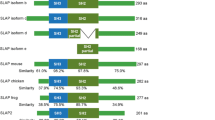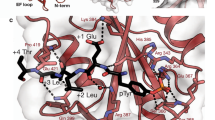Abstract
CRKL is a 39 kDa adapter protein, originally cloned in proximity to the BCR gene on chromosome 22, which has a key regulatory role in hematopoietic cells. CRKL has one SH2 and two SH3 domains, with 60% homology to CRK II. CRKL is a prominent substrate of the BCR/ABL oncoprotein in chronic myelogenous leukemia and binds to both BCR/ABL and c-ABL. CRKL has been shown to be tryosine phosphorylated in response to normal hematopoietic growth factor receptor signaling with ligands such as thrombopoietin, erythropoietin or steel factor. Additionally, CRKL is involved in signaling initiated by crosslinking of β integrins, and B cell or T cell receptors. Structurally, the amino-terminal SH3 domain of CRKL has been shown to bind proteins such as C3G, SOS, PI3-K, c-ABL or BCR/ABL. The SH2 domain of CRKL can bind to tyrosine phosphorylated proteins such as CBL, HEF1, CAS or paxillin. This review summarizes the current knowledge on the function of this unique adapter protein in normal hematopoietic and leukemic cell signaling.
Similar content being viewed by others
Author information
Authors and Affiliations
Rights and permissions
About this article
Cite this article
Sattler, M., Salgia, R. Role of the adapter protein CRKL in signal transduction of normal hematopoietic and BCR/ABL-transformed cells. Leukemia 12, 637–644 (1998). https://doi.org/10.1038/sj.leu.2401010
Received:
Accepted:
Published:
Issue Date:
DOI: https://doi.org/10.1038/sj.leu.2401010
- Springer Nature Limited
Keywords
This article is cited by
-
Functional fingerprinting of human mesenchymal stem cells using high-throughput RNAi screening
Genome Medicine (2015)
-
The adaptor protein Crk in immune response
Immunology & Cell Biology (2014)
-
C3G forms complexes with Bcr-Abl and p38α MAPK at the focal adhesions in chronic myeloid leukemia cells: implication in the regulation of leukemic cell adhesion
Cell Communication and Signaling (2013)
-
High CC chemokine receptor 7 expression improves postoperative prognosis of lung adenocarcinoma patients
British Journal of Cancer (2013)
-
TAT-CC fusion protein depresses the oncogenicity of BCR-ABL in vitro and in vivo through interrupting its oligomerization
Amino Acids (2013)




